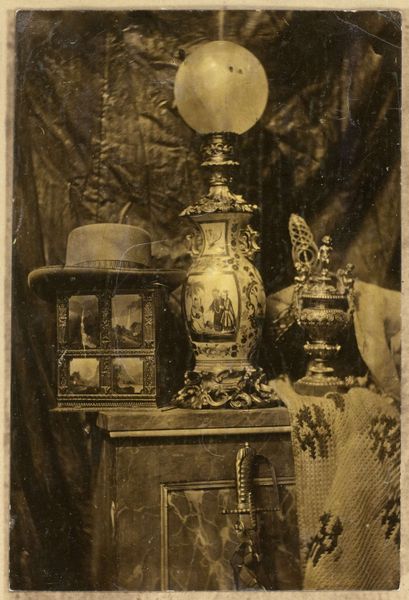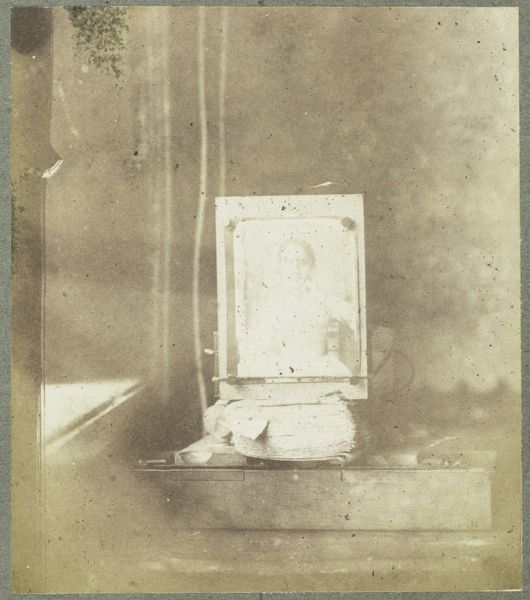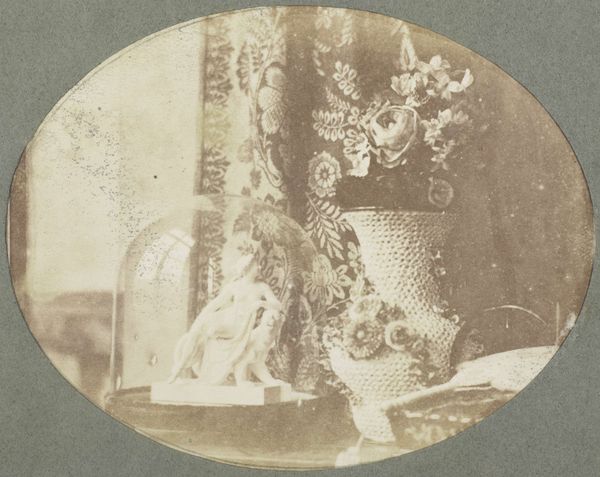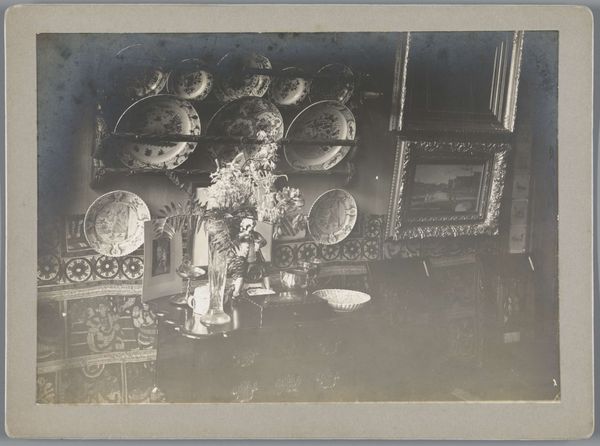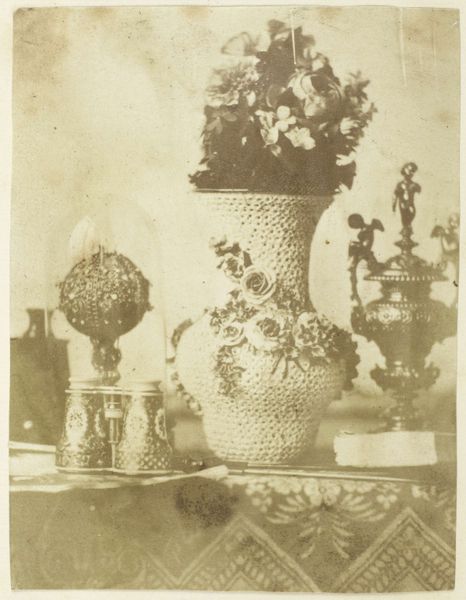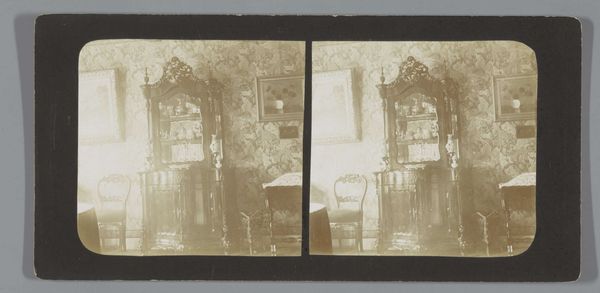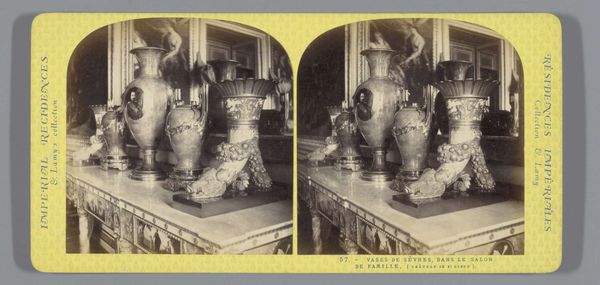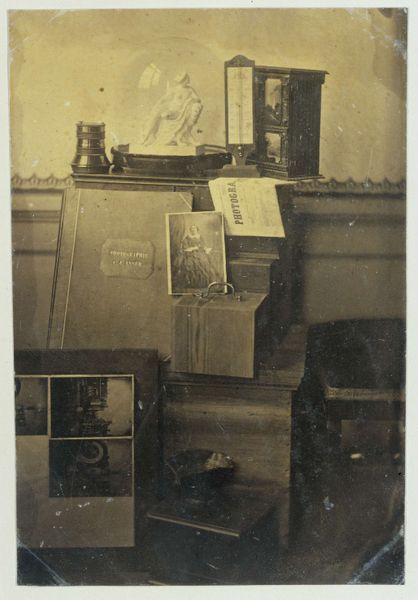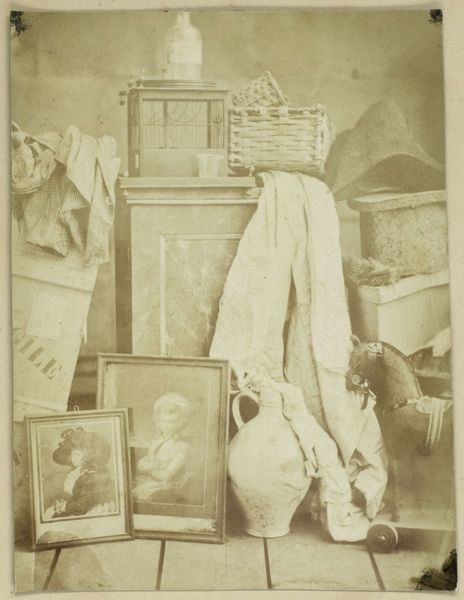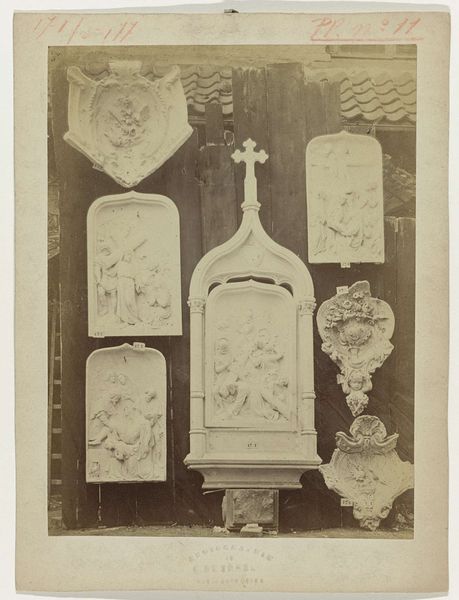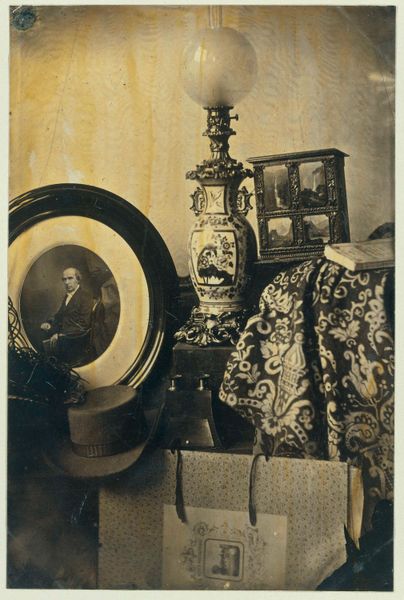
Stilleven met een kleine kopie van 'Ariadne auf dem Panther', een 'Schneeball-vaas', bloemen en een boek c. 1852
0:00
0:00
Dimensions: height 100 mm, width 66 mm
Copyright: Rijks Museum: Open Domain
Curator: This remarkable still life before us, titled "Stilleven met een kleine kopie van 'Ariadne auf dem Panther', een 'Schneeball-vaas', bloemen en een boek," was captured by Eduard Isaac Asser around 1852. The photograph is held here at the Rijksmuseum. Editor: It feels very much of its time, a delicate dance between fragility and display. There's almost a spectral quality to the image, with the soft focus and muted tones lending a dreamlike air. It evokes that mid-19th century aesthetic with an interest in posing the items as subjects. Curator: Indeed. As a piece of early photographic art, this work allows us a glimpse into the social conventions and the material culture of the era. The 'Schneeball-vaas', a 'snowball vase,' was a coveted decorative object, suggesting a degree of affluence and cultivated taste. Note the placement of the book as a statement of literary appreciation, aligning perfectly with middle-class cultural aspiration. Editor: Right, but it's also interesting to me that there's a small copy of 'Ariadne auf dem Panther' showcased there. The myth of Ariadne abandoned yet powerful—placed under glass and reduced. Curator: Precisely! The act of photographing art objects, especially in a carefully curated still life, becomes an exercise in establishing a certain hierarchy and asserting cultural capital. How artworks are treated is an argument on social hierarchy. The use of sculpture, along with books, suggests that high culture should have a revered place. The flowers introduce the transience of beauty. Editor: And of course, photography itself was emerging as a medium of representation—making artwork reproducible, although I suspect, it also served an almost preservationist goal here as well, capturing a perfect arrangement for posterity and framing domestic items. Curator: An excellent point. Considering this still life within the larger context of early photography, we might reflect on its impact on art's accessibility, shifting notions of beauty and the intersection of aesthetics and consumerism in bourgeois society. Editor: Definitely. Seeing it with this historical insight has sharpened my own appreciation for how such seemingly simple compositions contain such layers of social significance, how they present objects for consumption rather than practical reasons.
Comments
No comments
Be the first to comment and join the conversation on the ultimate creative platform.
